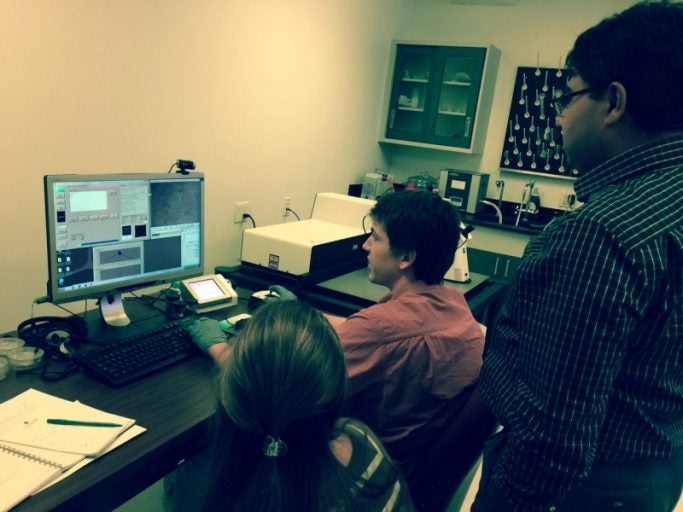Controlling and bending light around an object so it appears invisible to the naked eye is the theory behind fictional invisibility cloaks.
It may seem easy in Hollywood movies, but is hard to create in real life because no material in nature has the properties necessary to bend light in such a way. Scientists have managed to create artificial nanostructures that can do the job, called metamaterials. But the challenge has been making enough of the material to turn science fiction into a practical reality.
The work of Debashis Chanda at the University of Central Florida, however, may have just cracked that barrier. The cover story in the March edition of the journal Advanced Optical Materials, explains how Chanda and fellow optical and nanotech experts were able to develop a larger swath of multilayer 3-D metamaterial operating in the visible spectral range. They accomplished this feat by using nanotransfer printing, which can potentially be engineered to modify surrounding refractive index needed for controlling propagation of light.
“Such large-area fabrication of metamaterials following a simple printing technique will enable realization of novel devices based on engineered optical responses at the nanoscale,” said Chanda, an assistant professor at UCF.
The nanotransfer printing technique creates metal/dielectric composite films, which are stacked together in a 3-D architecture with nanoscale patterns for operation in the visible spectral range. Control of electromagnetic resonances over the 3-D space by structural manipulation allows precise control over propagation of light. Following this technique, larger pieces of this special material can be created, which were previously limited to micron-scale size.
By improving the technique, the team hopes to be able to create larger pieces of the material with engineered optical properties, which would make it practical to produce for real-life device applications. For example, the team could develop large-area metamaterial absorbers, which would enable fighter jets to remain invisible from detection systems.
Other members of the research team include: Li Gao, Youngmin Kim, Kazuki Shigeta, Steven Hartanto and John Rogers from the University of Illinois at Urbana-Champaign; Abraham Vasquez-Guardado and Daniel Franklin from UCF: Christopher J. Progler from Photronics Inc. and Gregory R. Bogart from the Sandia National Laboratories.
Chanda joined UCF in Fall 2012 from University of Illinois at Urbana-Champaign with joint appointment with the Nanoscience Technology Center and the College of Optics and Photonics (CREOL). He has published multiple articles on light-matter interactions and metamaterials and is a reviewer for multiple journals in his field. For some of his pioneering works, Debashis was awarded a Department of Energy solar innovation award and a Natural Sciences and Engineering Research Council award among others. He also earned a National Science Foundation Summer Institute Fellowship in 2013.
